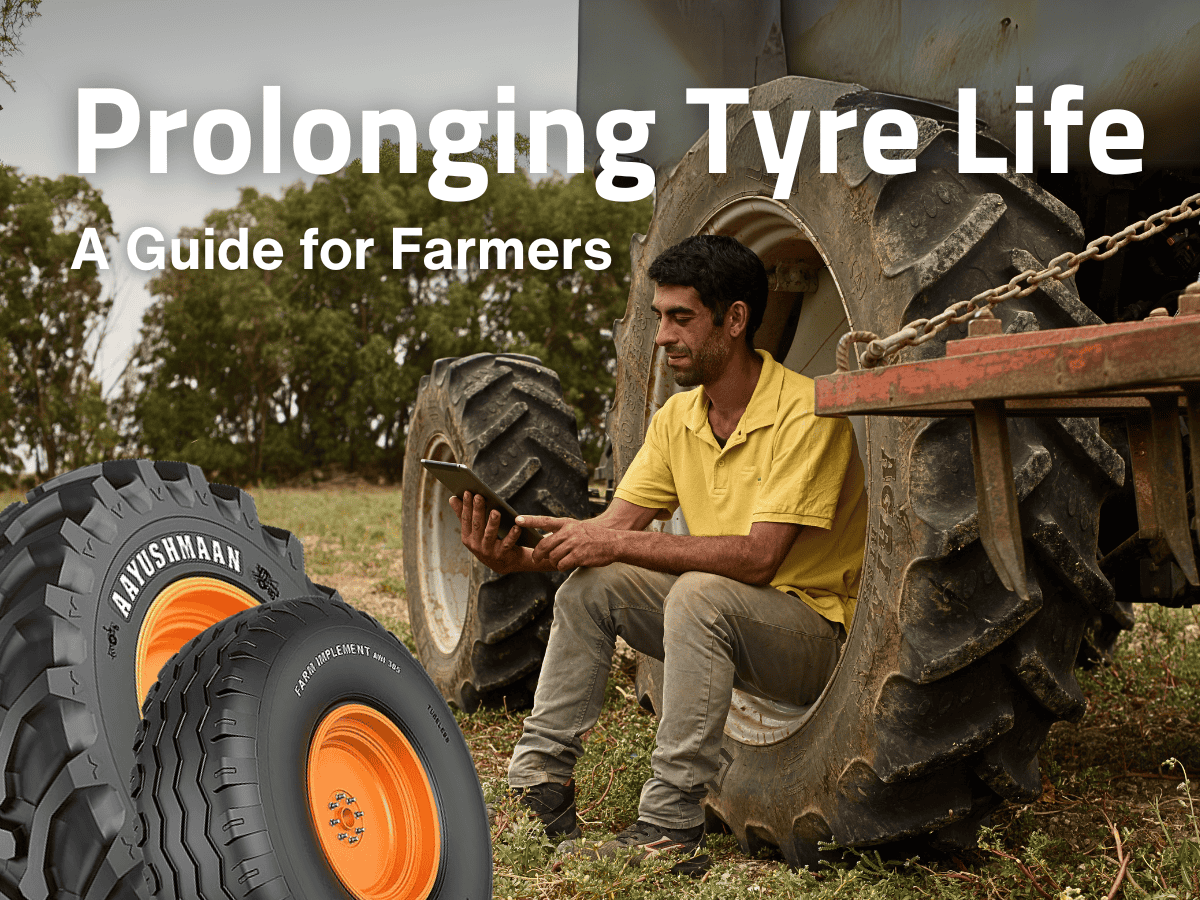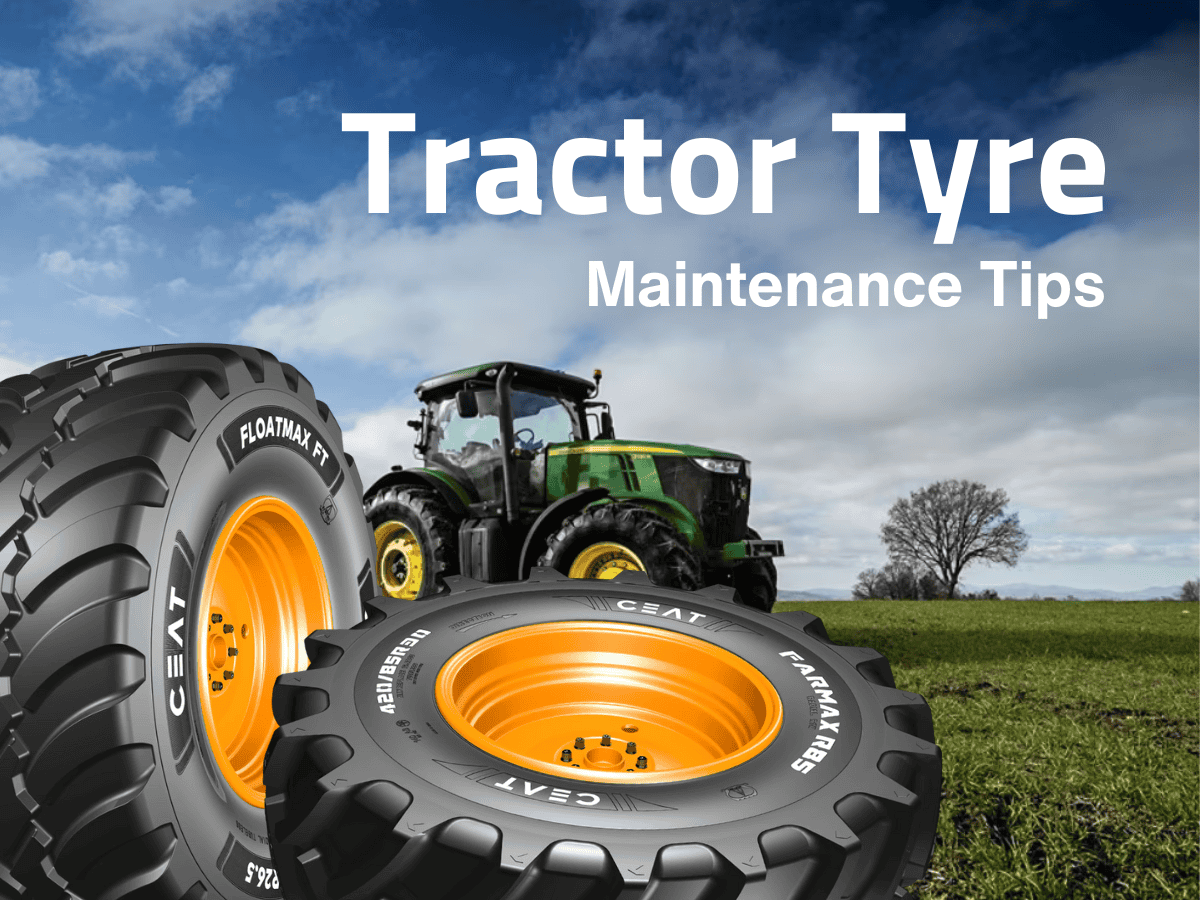ceat-speciality:blogs-tags/all,ceat-speciality:blogs-tags/tyre-care
Why different-sized tyres and wheels front and rear on a tractor?
Thu, 20 Jan 2022 | PRODUCTS
Tractor design has changed out of all recognition since the first combustion-engined models were introduced over a century ago. With a few exceptions, though, one aspect remains largely unaltered. Tractor tyres and wheels are smaller at the front and larger at the rear on most tractor types. But when you are searching the internet for ‘tractor tyres for sale’ or ‘tractor tyres near me’, or looking through a tractor tyres price list, do you wonder why this remains the most common configuration?
Of course, there are several tractor designs that do feature equal-sized wheels front and rear, but they tend to be more complex in design – and therefore have a higher purchase price and operating cost – than a more common tractor with front wheels and tyres smaller than those at the rear. Equal-wheel configuration tends to be more common among the largest and very smallest tractors, where scale and specialism are the key justifications for the expense. For example, at these ends of the spectrum, the additional cost of steering axles front and rear, or an articulating joint between the axles, can more commonly be justified by high-value specialist crop farming such as fruit production or large-scale agriculture with big fields.
Among most other farm types, tractors with large rear wheels and tyres, and smaller ones at the front, remain the most common type. But what does this mean for your tractor tyre purchasing decisions, and how should it influence how you operate your tractor and look after your tractor tyres.
Steering
A primary reason for designing a tractor with smaller front wheels than the rears is that it makes steering much more effortless. The smaller diameter of the wheels and tractor tyres means a smaller ground contact patch, but this also results in a reduction in required turning effort and less tyre scrub on with the road – where the movement will wear the tractor tyres – or the field, where it will smear the soil surface. Larger front wheels also require a heavier front axle, contributing to overall tractor weight and exacerbating soil compaction. Of course, the development during the 1970s of power steering for tractors made a big difference to the ease with which a tractor could be steered – even one with equal-sized wheels. Many modern tractors feature automatic disengagement for the drive to the front axle above a certain speed to prevent front axle tractor tyre wear on the road. If yours doesn’t have this, ensure you disengage four-wheel drive before leaving the field.
Traction
Tractors with front tyres and wheels as big as those at the rear were originally designed to provide the additional pull of a driven front axle and take full advantage of this via the maximum footprint afforded by large front tractor tyres. However, the design of many modern tractor tyre types for those with conventional front axles means that even a ‘small’ front tyre can offer a long footprint, with multiple lugs engaged with the ground and, therefore, the maximum tractive force from the tractor put to the ground. This is because modern carcase designs are moulded with more advanced tread patterns and use more flexible materials, allowing the tractor tyres to be run at lower pressures.
Manoeuvrability
Having wheels and tyres of a smaller diameter at the front of the tractor, on the steering axle, makes steering the machine much more effortless. The turning radius is important even if most of its work is in large fields. For example, it will still be necessary to make neat turns with the minimum of manoeuvring and shunting when meeting the headland at the end of each field run, no matter the type of work or the field size. Modern tractor steering systems on tractors with powered front axles angle the wheels when fully turned, to maximise manoeuvrability. However, turning sharply on full steering lock will benefit neither your tractor’s front tyres not the surface underneath them, causing abrasion and damage.
Weight distribution
If a tractor with large rear wheels and smaller ones at the front is fitted with good tyres operated at the correct pressures and is properly weighted on the nose for the job it is undertaking, it should have a weight distribution of 60% on the rear axle and 40% on the front. With a soil-engaging mounted or trailed implement, this weight distribution will alter to 50% front and 50% rear when the tractor and implement combination is working. The tractor can pull more weight with the rear axle higher than the front while keeping the front tractor tyres fully anchored to the ground. The larger rear wheels also counterbalance the tractor when it has only a light load on the rear, while their more extended footprint and broader section width help distribute the tractor’s weight thoroughly to minimise ground pressure.
When searching the internet for ‘tractor tyres for sale’ or ‘tractor tyres near me’, or looking through a tractor tyres price list, bear these principles in mind – respect them, and they will help you get the best from your tractor tyres.




























































































































